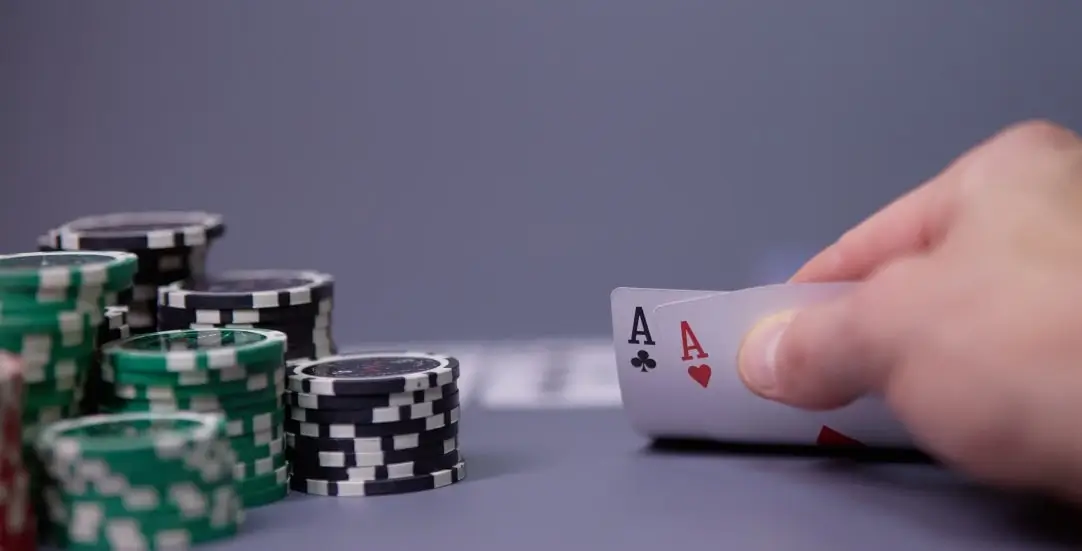Types of blackjack – differences between variations

Blackjack is an immensely popular game boasting a very long history, as well as a staple in casinos throughout the world. Throughout the years, many various types of blackjack games have been developed, with slight variations in rules. All of them are derived from an older game played in most of Western Europe named twenty-one, or 21: in Spanish the game was called ventiuno, as well as vingt-un in French.
Popular blackjack variations
There are several types of blackjack – the most played ones include American blackjack, European blackjack, blackjack switch, perfect pairs, free bet blackjack and the classic Spanish 21. Rules for each of those are very similar, but there are some minor differences to keep in mind when exploring the options at your casino of choice. Most often, players choose American or European blackjack, which is available at most iGaming establishments, as well as online sites.
House edge
Regardless of the exact type of game you’ll be playing, all the different variations of blackjack have some house edge. It’s worth noting, though, that it’s one of the lowest for the ‘standard’ casino games, usually not passing even 1%. What does it mean? If you use even a slight bit of basic strategy, you can expect not to lose more than one percent of your money over the long run. That, in itself, is a major draw for responsible players, but if you want to truly win big, it’s worth learning about some other blackjack rule variations affecting the house edge. The payout rules have a major effect on house edge – casinos using ‘6 to 5’ instead of ‘3 to 2’ have an edge that’s almost twice as high.
Number of decks played
Most casinos use eight decks of cards in blackjack, but some prefer to use six. The number of decks has a slight effect on the house edge, with lower numbers providing more advantage to the player. From the mathematical perspective it would be ideal for the bettor to play with just a single deck, however shuffling it after every round can take up a considerable amount of time, leading to a worse casino experience. Depending on the types of blackjack played, the number of decks can range from two to eight.
Rules of doubling down and splitting
‘Splitting’ in blackjack refers to playing two cards with the same number as two separate hands with one hand each, requiring a bet of equal value for both. ‘Doubling down’ means placing another bet (also equal to the first one) before receiving another card from the dealer. When trying to figure out a perfect strategy, don’t forget to include those two actions in your plans.
Different types of blackjack can have individual rules on doubling down and splitting. For example, while American blackjack limits the player to split three times per whole game, European blackjack allows doing so once per hand.
Dealer rules on soft 17
Some of the numbers appearing throughout a blackjack game play a very specific role. Apart from the classic 21, which every player tries to reach, there’s also the 17. Once that number is passed when the dealer draws cards, the dealer’s hand is resolved. There are, of course, many combinations of cards that give this exact result, but there’s a particular one to keep in mind. If the total value of the dealer’s hand is 17 and one of the cards is an ace, it’s called a ‘soft 17’. That means, in practice, an ace along with any variation of a 6. It’s also worth exploring the available types of bets in blackjack to make the best out of any hand you’re dealt.
Whether the dealer has to hit or stand on a soft 17 (‘H17’ and ‘S17’) has a small, but still noteworthy effect on the house edge. The second option slightly decreases the player’s risk of losing by about 0.2%.
The most popular blackjack variations to play online
The wealth of options available at online casinos allows the players to explore all the different types of blackjack. Some are more popular than others are, but it’s definitely worth it to know the blackjack rule variations even among the lesser-known ones. Payout rules, number of decks, H17/S17 – those are usually independent of the version of the game being played, but there are some other differences which might affect the flow and the outcome of your blackjack round.
The most commonly played types of blackjack are American blackjack and European blackjack, with only some small variations between them. Going down the blackjack rabbit hole can lead to some very interesting games, though. Even the most experienced players should play Spanish 21 or some other variation once in a while to keep their strategies fresh, or even take a new approach to the game.
American blackjack
It’s often considered the ‘default’ version of blackjack, even though the game itself was created in Europe – specifically in Great Britain, evolving from older Spanish and French variations. Being the most commonly played one, it can serve as the basis of rule variations when describing the other types of blackjack. How is American blackjack played, then? Let’s start by specifying the goal of the players: they should aim to hit a total hand value as close to 21 without going over that number. Sounds simple enough – now we can get to the specifics.
Typically, several 52-card decks are used – most often there are six or eight decks in play. The total number of cards is then 312 or 416. In live dealer casinos, there’s also an additional, plastic card that’s placed near the bottom of the deck, which lets the dealer know when to shuffle the cards.
The so-called ‘court cards’ – the king, the queen, and the jack – have a value of ten. All the other cards have their pip value, with the ace being able to serve as either a 1 or a 10: it’s up to the player to decide.
When starting the game, the dealer shuffles the deck, and one of the players is designated to ‘cut’ it. Each round begins with the players placing their initial bets, and after that, the dealer gives a card face-up to each player, then a card face-up to themselves, then another round of face-up cards to the players. The second card of the dealer is played face-down. If you’ve received a 10 and an ace – congratulations! That combination is called a ‘natural’ or ‘blackjack’, giving you your stake back with a 50% bonus. Otherwise, players must decide whether to ‘hit’ or ‘stand’, that is to get another card or keep their hands as they are. If the value after getting a card is over 21, it’s called a ‘bust’. After serving players, the dealer reveals his face-down card, then draws until passing 17. At the end of the round, the players’ bets are resolved.
European blackjack
European blackjack introduces just a few minor differences to American blackjack. The second, face-down card is played only after the players’ moves. Smaller numbers of decks are used more often, and splitting is permitted per each hand, in contrast to the three-times-a-game limit in the American version.
Perfect pairs blackjack
The biggest difference in this variation is the players’ ability to place an additional bet that pays out when their first two cards make a ‘perfect pair’: that is, having the same value and suit. The typical payout is 30 to 1. Otherwise, all the rules stay the same as in American blackjack.
Free bet blackjack
Free bet blackjack gives the player the option to double down for free on a 9, 10 or 11, as well as a free split on all pairs (usually except fours or tens). It’s a good way to place an additional, risk-free bet, but it comes with a slight caveat – if the dealer’s hand’s value is 22, the player doesn’t win; instead, it’s a push.
Blackjack switch
It’s a very new variation of the game: blackjack switch was developed only in 2009. Most of the rules are the same as in American blackjack, but the players receive two hands – they can pick out (or ‘switch’) one of them at the beginning of the round.
Multi-hand blackjack
The concept is very similar to blackjack switch, but in this one, the players don’t have to choose. Multiple hands can be played at the same time.
Spanish 21
Spanish 21 is the precursor to blackjack, as well as a newer variant introducing some differences in how the game is played. The payouts are slightly higher, but there’s a twist to keep in mind – the decks don’t include tens.
Live dealer blackjack
Some online blackjack games use an automatic shuffling machine, which is often considered less fun for the players. While an actual, human dealer is a given in pretty much any casino, not all the online ones go that route – if you want to have that direct human touch, look for live dealer blackjack.




















